Courland-Semigallia imperial port (1625-1795)
Liepāja was born out of a wish of a small Duchy of Courland and Semigallia to become a major naval power. For this it needed ports, and Liepāja located on a great location between sea and lake was granted city rights in 1625. Ships left its shores to colonize Gambia and Tobago, while the port was constantly expanded (in 1697 artificial lake-to-sea shipping canals have replaced a local river). While the majority of Courland-Semigallia population was ethnically Latvian, its leadership and elite were German. As such, the new Liepāja was overwhelmingly German, who called the city Libau.

The plan of colonization may have been too big for the small Duchy. After losing multiple wars, Courland-Semigallia had to relinquish its American and African colonies in the 18th century and ceased to be a naval power. Liepāja’s importance plummeted together with that of its owner-state, which slowly came under Russian influence.
Westernmost city of the Russian Empire (1795-1918)
In 1795 Russia annexed Courland-Semigallia, acquiring Liepāja. However, little did actually change in the city for another half a century. Ethnic Germans retained the majority (still at 63% in 1863) while the growth was slow.

All that started to crumble as railway reached Liepāja (1871), allowing development of factories. Liepāja expanded as Russia’s westernmost port. It received a direct steamship service to New York and was used for cargo export. It was the starting point of Russia-USA Transatlantic telegraph (est. 1906). The population increased from 10000 in 1863 to 84000 in 1911.

The “unsafe” location of what has by now become an important city troubled the Russian czar (German border was merely 70 km to the south). In 1890 he commissioned an unprecedented all-new naval military city north of Liepāja-proper. Now known as “Karosta” the military port had its own splendid Russian Orthodox church, multiple fortifications, a shipping canal spanned by a rotating bridge, pigeon mail station and even an internal narrow gauge railway. Numerous red barracks were the staple housing for Russian soldiers and officers.
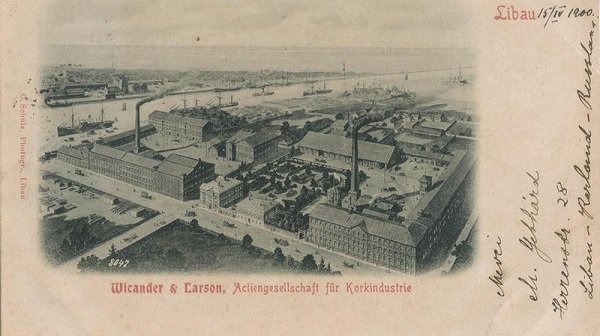
The new seat of Russia’s military might did little to prevent the societal changes that ultimately led to the demise of Russian rule over Latvia. Latvians were moving into Liepāja in massive numbers from nearby villages to staff the burgeoning industry. Their population share increased from 16% in 1863 to 43% in 1911. After becoming more educated and imbibed in the urban lifestyle, Latvians started to treat their own culture and language with respect, demanding more rights (or even independence) for their nation.

In fact, Liepāja was at the epicentre of not one, but two national awakenings. Located next to Lithuanian ethnic lands (also Russian-ruled at the time) the city attracted thousands of Lithuanians for work and educational opportunities (which were limited back in Lithuania due to Russia’s anti-Lithuanian and anti-industrial policies there). Some estimates claim that on the eve of World War 1, Lithuanians made up to a quarter (25%) of the entire Liepāja’s population. Lithuanians who had graduated from Liepāja gymnasium participated heavily in their own Lithuanian National Awakening. Many key figures of the early 20th century Lithuania had spent their formative years in Liepāja.

Interwar Latvia’s 2nd city (1918-1940)
World War 1 gave the opportunity to realize the goals of both national revivals as Germany and Russia were defeated. Lithuania and Latvia declared independence in 1918. While there was a brief dispute on which country should receive Liepāja, arbitration ruled in favour of Latvia (1922). The city even briefly served as Latvia’s capital while Riga was occupied by Russians during the Latvian War of independence.

Thousands of Lithuanians, Poles and Russians left for their own now-separate homelands, bringing Liepāja’s population down to 50000 by 1925.
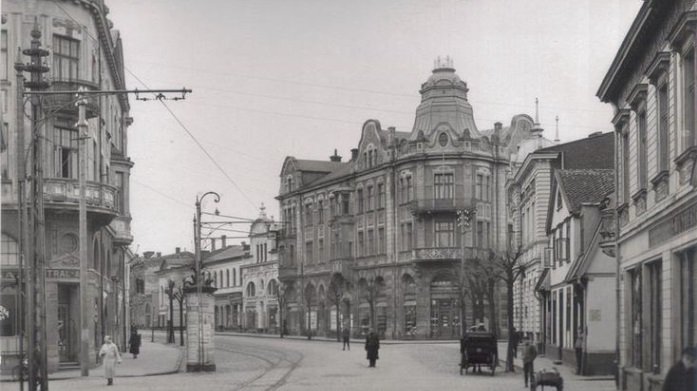
Germans largely remained as they always did, but by the 20th century, they were already a spent force as there were no rural Germans who would migrate into the city. Therefore German share declined every year as non-Germans poured in. By 1925 it was already down to 10%. On the other hand, the numbers of Latvians grew constantly. By 1935 Liepāja was 68% Latvian with a total population of 57000; it became Latvia’s second largest city.
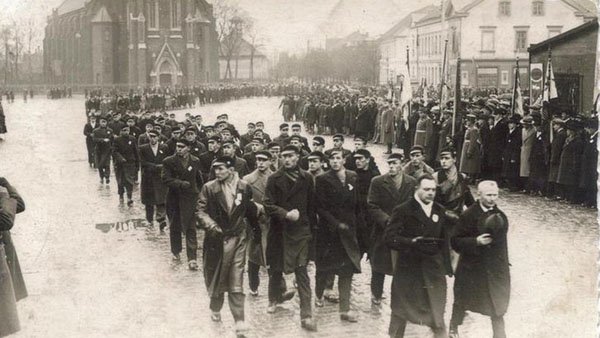
Forbidden Soviet military city (1940-1990)
World War 2 brought a major upheaval to Liepāja. German population was destroyed due to Soviet occupation (who had also killed many Latvians) while the Jewish population (13% in 1935) was decimated by Nazi German occupation.
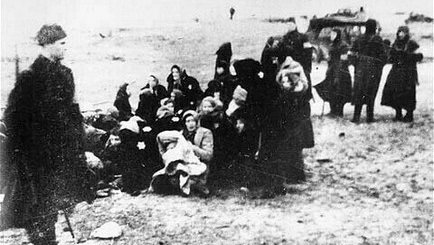
Those who died were swiftly replaced by people from the Soviet Union, especially ethnic Russians. By 1959 Liepāja was already larger than before WW2 (71000 inhabitants). By 1979 Russians became the largest ethnic group in the city. Liepāja’s population peaked at 114000 in 1989 (at the time, merely 38,8% of locals were Latvians and 43,1% were Russians).
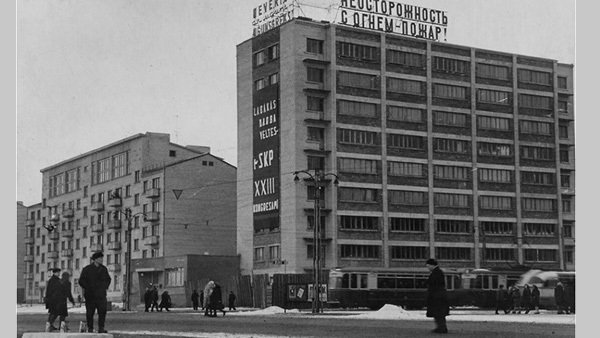
Additionally, Soviets have repopulated the old Russian Imperial Karosta naval base, staffing it with 26000 soldiers and officers (this was one-fourth of Liepāja’s inhabitants). As every Soviet city of military importance, Liepāja was closed: no person from outside city limits could have visited it without a government permit.

As Liepāja used to be a comparably large city even before World War 1, relatively little expansion was needed. Only a few Soviet districts were added, helping Liepāja retain that “old wooden city” atmosphere of the 19th-century industrial boom. Slower growth led Liepāja to lose the status of Latvia’s second largest city to Daugavpils.

Modern Liepāja seeks identity (1990-)
The restoration of Latvia’s independence (1990) led to the final departure of Russian soldiers and officers by 1994. This was especially welcomed by Liepāja’s citizens. However, it once again sent the population on the decline (89000 in 2000). Many of the Liepāja’s old buildings were abandoned. This was especially true in Karosta, the proportions of which were meant to serve a massive empire rather than a small Latvian navy. The “naval military city” became nearly entirely abandoned, its red barracks slowly crumbling into oblivion.
In order to revitalize the city, a free economic zone was established in 1997, attracting businesses from abroad. New tourist attractions were opened, gentrifying the main canal shoreline and even (somewhat) the Karosta, which became a popular location for dark tourism.
Given its reclaimed Latvian plurality (49,4% in 2000, a larger share than in either Riga or Daugavpils) the city was believed to be especially livable by ethnic Latvians. However, it was plagued by difficult access. Latvia’s lack of highways mean that some 3 hours are needed to go to Riga; the attempts to open Liepāja airport for passenger traffic failed while Liepāja port is behind those of Riga and Ventspils.


I grow up in Liepaya, 1960 to 1973.
Although the the beach area was closed after 9 pm, the city of Liepaya was an open city. Everybody could visit it without any special permission.
So your information is not correct.
It is hard to call this as objectively historical information. It looks like the reason of that text was to show ”suffering” from Russia/Soviet. The war of independence was not between Latvians and Russia, but between people supported independence of Latvia (Baltic Landeswer) and people who wanted to stay with Russia/Soviets. example: Oskars Kalpaks, Janis Balodis, Ioakim Vacietis etc.
Conclusion: if you are interested in history of Liepaja or Latvia better to find more constructive source.
The Russian/Soviet armies, which sought to reconquer Latvia, consisted mainly of Russians (and, to a lesser extent, other non-Latvians) and were directed by Russians. In that way, they were not any different from any other foreign armies that conquered or sought to conquer Latvia, be it Livonian Order, Polish, Swedish, Nazi German, etc.
While some Latvians collaborated with these foreign armies, this happens in every war everywhere. If we’d adopt the naming practice you suggest, we would also have to say, for example, that World War 2 was fought not between the Soviet Union and Germany but between the “people who supported Nazi Germany and people who supported the Soviet Union”, as both regimes had collaborators, volunteers and others serving them who were not their citizens.
The Latvians that you mention, collaborating with the Russians, were traitors. Just like the significant numbers of Russians who collaborated with Nazi Germany.
Could you please add information about Livonian order, annexation of Libau of Sweden by Karl XII, and also how Poland ruled there. This is one more prove of distortion of history.
P.S. I would agree with Lena that Liepaja had the status of closed city, but there was only specific period of time and mostly in documentation.
That information is available in the articles on the History of Latvia, History of Riga, History of Daugavpils.
As for Liepāja, the city arguably gained enough influence only in the Courland-Semigallia era, when it gained city rights (and the role it played before that was minor). That’s why its history in this article begins there.
I’m thinking of all those children and mothers shot on the beach by the latvian police in coordination with the german occupiers. God bless them all.
I am sorry but this is very poor source.
You’re pretending to a ‘historian’ but it feels that you just took infos in some wikipedias around and don’t really get into.
Make accents on unimportant points while passing by some key moments.
And of course this a typical one-sided anti-russian pattern. No surprise. But nobody wouldn’t know about this town if it wasn’t under Russian Empire. It would be just the same port village like Pavilosta for example.
P.S. Courland got under Russia in 1721 with a Treaty of Nystad which ended a Northern War and described the conditions of piece and situation with lands.
*No, Russia did not gain Courland in the Treaty of Nystad (1721) – in this treaty, Russia gained only the Vidzeme region of Latvia (where Riga is located) but not Courland (where Liepāja is). Courland-Semigallia came under the Russian rule only in 1795.
*Liepāja was a major port long before Russian Empire. While it indeed expanded greatly during the Russian Empire’s rule, the fact is that the era (1795-WW1) simply was the prime era of urbanization, industrialization, and trade increase in most of Europe, regardless of who was in power. It is impossible to say “How Liepāja would have looked if not Russian Empire rule?”, as it would have depended on who would have ruled it. E.g. if it was Sweden it would probably have not developed Liepāja as much as if it would have been Poland-Lithuania (had it somehow survived beyond 1795) as Poland-Lithuania generally lacked other ports. By the way, Pavilosta was also ruled by the same powers as Liepāja (i.e. Russia since 1795), so its different history cannot be explained by different ruling powers.
*The Russian part of history and development is clearly mentioned, with the naval military base and other things. It should be noted that our other article on Daugavpils history received criticism of being “Too Russia-centric” in the comments – but I guess this just shows the different histories of these cities. Liepāja was a major port for a long time before Russia, with large Baltic German and Latvian populations. Daugavpils, on the other hand, was more or less developed by the Russian Empire and then the Soviet Union, and its population was never Latvian-majority or Baltic-German-majority, with the Russian component the strongest nowadays and Russian language predominant.